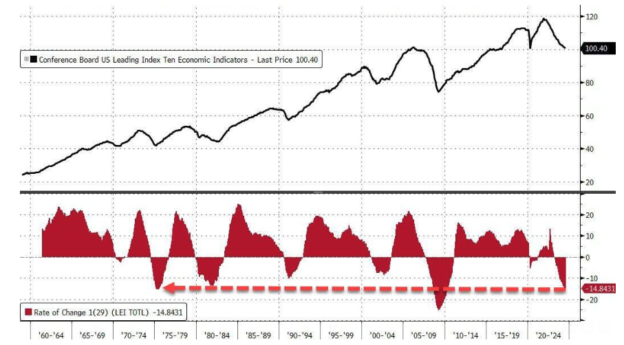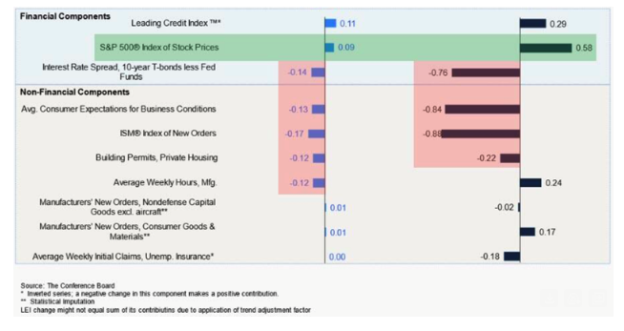LEI Following PMI Into Irrelevance
It seems we keep adding more “non-financial” indicators to these measures, and as we do, they become less reliable. It’s always said, “Emotions are the enemy of investors”. If this is true, why do investors rely on emotional measures from other people to make macro decisions? Maybe this is why macro investing is so hard, people are making quantitative decisions based on emotional inputs.
It’s destined to go wrong…..
“Davidson” submits:
The Conference Board reported the LEI (Leading Economic Index) as equaling the lows during the COVID lockdowns. That this report did not forecast recession was met with a high level of skepticism by the investment community. While there are some economic indicators as part of the 10 inputs(these were mostly flat to a little weaker), the sentiment indicators were demonstrably negative i.e. the PMI and the Yield Curve inversion and consumer expectations. The negative changes are highlighted in RED in the report.
(Click on image to enlarge)

(Click on image to enlarge)

Like the PMI, the Regional Fed Diffusion Indices and other market psychology indicators, the LEI registering a pessimistic outlook has proven to be an equity buy signal. Coupled to selecting out-of-favor well-managed companies has always proven beneficial to portfolios. Even though the official LEI chart from 1960 does not include recession periods, it is clear that it makes lows during recession periods when pessimism is high.
In my opinion, this is another period of pessimism with a documented history that indicates lower investment risk if one is selective.
More By This Author:
The SPR Has Not Been RefilledIgnore PMI
Fed Cut? Not Now, But Soon
Disclaimer: The information in this blog post represents my own opinions and does not contain a recommendation for any particular security or investment. I or my affiliates may hold positions or ...
more


